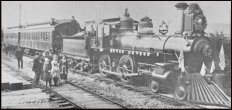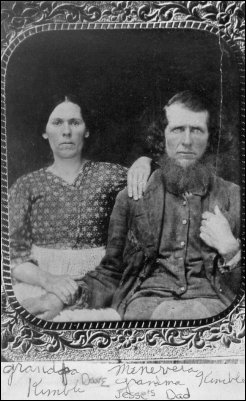Skagit River Journal
Subscribers Edition Stories & Photos

|
Subscribers Edition Online launched on Jan. 1, 2001, now in 4th year This is a page from our Subscribers Edition. Our free site remains free. How to subscribe to our separate online magazine or donate to our project |
Skagit River JournalSubscribers Edition Stories & Photos |

|
 |
The claim that Grandpa Hartson decided on was on the west side of the river, and just below the jam that closed off river navigation from that point on upstream. A portion of this jam lies today below a growth of Alder trees on the west side of the river. (now Edgewater Park}Oldham note: The school in the new settlement, according to the above report by the Skagit County Historical Society, was "three months long, and held in the Kimble barn".
The first move was a clearing for the new log cabin and a garden plot. Many fine logs went up in flames that would be remembered (and later regretted) in later years when they would have been useful, and then the stump ranch was increased to make a little room for a barn. Then the woodsmen's tools were gotten out, shakes were made for the roofs, logs cut and shaped for the cabin, beams, planks, and joists for the floors, window frames made and necessary furniture manufactured, all in readiness for the coming trip of the small streamer that was to ferry the families to the claim.
After the well-built cabin was finished, the next thing to think of was the barn. Everyone was busy cutting to size logs for framework and joists and rafters. It was a common practice to fasten the larger pieces together with wooden pegs. Keep always in mind that nails were a scarce commodity, and those that were used were the old style cut nails, not the wire nails of today. With everything all ready, invites went out for the barn-raising bee. This went off like clockwork, and the willing hands soon had a frame up that began to look like a barn. Then, to wind up the day, after a light supper, there was a "christening" barn dance and genial get together. It took some artist to dance on the average barn door of those days. Grandfather had the floor laid before, and had done a good job of it"
|
Please report any broken links or files that do not open and we will send you the correct link. Thank you. |
|
Heirloom Gardens Natural Foods at 805B Metcalf street, the original home of Oliver Hammer Oliver Hammer Clothes Shop at 817 Metcalf street in downtown Sedro-Woolley, 82 years Bus Jungquist Furniture at 829 Metcalf street in downtown Sedro-Woolley, 36 years Schooner Tavern/Cocktails at 621 Metcalf street in downtown Sedro-Woolley, across from Hammer Square Peace and quiet at the Alpine RV Park, just north of Marblemount on Hwy 20 Park your RV or pitch a tent by the Skagit river, just a short driver from Winthrop or Sedro-Woolley College Way Antique Mall, 1601 E. College Way, Mount Vernon, WA 98273, (360) 848-0807 Where you will find wonderful examples of Skagit county's past, seven days a week DelNagro Masonry Brick, block, stone — See our work at the new Hammer Heritage Square See our website www.4bricklayers.com 33 years experience — 15 years as a bonded, licensed contractor in the valley Free estimates, reference, member of Sedro-Woolley Chamber  (360) 856-0101 (360) 856-0101 |
|
|
|
|
|
View Our Guestbook |
|
|
Mail copies/documents to street address: Skagit River Journal, 810 Central Ave., Sedro-Woolley, WA, 98284. |